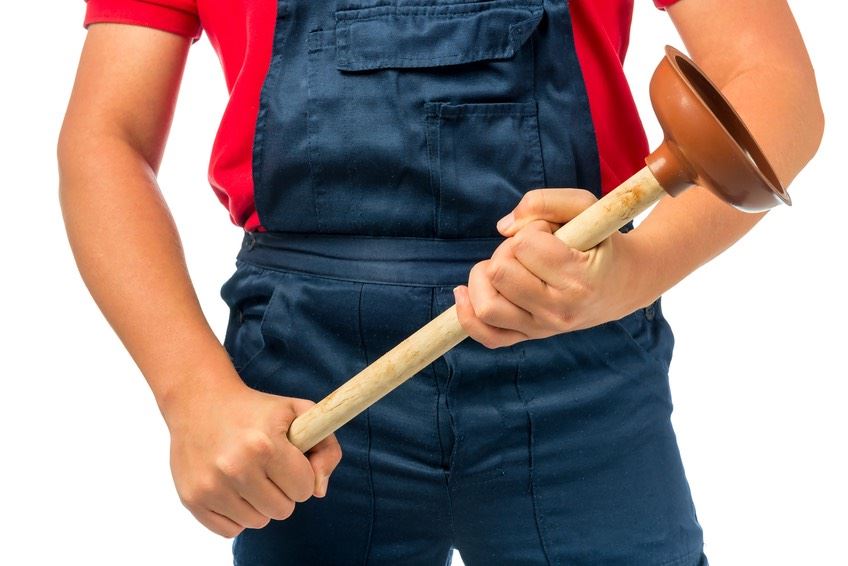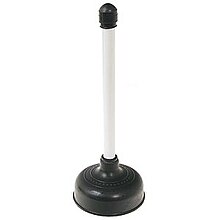Utilizing Plunger and Drain Cleaner: Effective Strategies
Utilizing Plunger and Drain Cleaner: Effective Strategies
Blog Article
What're your thoughts about A Guide to Plungers (and How to Use Them)?

Introduction
Proper upkeep of house drains pipes is crucial for protecting against obstructions and making certain smooth water circulation. One of the key tools in every home owner's toolkit is the bettor, together with various drainpipe cleaners made to deal with persistent blockages successfully. This write-up discovers exactly how to make use of plungers and drainpipe cleaners properly to keep your drains pipes streaming openly.
Section 1: Comprehending Plungers
Kinds of Plungers
There are numerous types of plungers readily available, each designed for different kinds of drains pipes and clogs. The most typical kinds consist of mug bettors, flange plungers, and accordion plungers.
Exactly How Plungers Job
Bettors work on the principle of producing stress and suction to displace obstructions. When correctly applied over a drainpipe, they produce a vacuum cleaner that can take out particles or break up blockages.
Choosing the Right Plunger
Choosing the best plunger depends upon the kind of drainpipe and the nature of the blockage. Cup plungers are optimal for sinks and bathtubs, while flange plungers are better suited for toilets due to their layout.
Usual Errors with Plungers
Preventing these mistakes ensures reliable plunging: inappropriate seal around the drain, insufficient pressure, and unclear bordering debris.
Section 2: Using Plungers Efficiently
Prep work
Before diving, guarantee the bettor covers the drain totally and develops a limited seal. Clear any kind of noticeable particles around the drain opening.
Strategy
Start with mild plunging movements to build suction. Boost stress slowly, making use of a stable rhythm. Repeat as essential up until the drainpipe gets rid of.
Fixing Tips
If diving does not work, attempt adjusting the seal, using oil jelly for a better seal, or using a different sort of bettor.
Section 3: Understanding Drain Cleansers
Sorts Of Drainpipe Cleaning Company
Drain cleaners can be chemical or enzymatic. Chemical cleaners use strong chemicals to dissolve clogs, while enzymatic cleaners use natural enzymes to break down organic matter.
How Drainpipe Cleaning Company Job
Chemical cleansers respond with blockages to dissolve them, while enzymatic cleansers break down natural products like hair and grease without harming pipelines.
Safety and security Factors to consider
Always wear handwear covers and eye defense when utilizing chemical drain cleansers. Make sure sufficient air flow and comply with supplier instructions very carefully.
Eco-Friendly Alternatives
Think about utilizing vinegar and baking soft drink or enzyme-based cleaners for eco-friendly choices that are much safer for pipelines and the atmosphere.
Area 4: Utilizing Drainpipe Cleansers Successfully
Application Methods
Pour chemical cleaners straight right into the drainpipe opening. Enable them to work for the recommended time prior to flushing with hot water. Enzymatic cleaners ought to sit overnight.
Preventative measures
Avoid mixing various sorts of cleansers, as this can generate toxic fumes. Never utilize chemical cleaners combined with a bettor, as spilling can take place.
Taking Care Of Persistent Obstructions
For persistent obstructions, take into consideration making use of a pipes serpent or calling an expert plumbing technician to avoid damage to pipes.
Conclusion
Finally, recognizing exactly how to utilize plungers and drainpipe cleaners efficiently is important for maintaining healthy and balanced plumbing systems. By choosing the right devices and techniques, home owners can deal with minor obstructions and avoid significant plumbing concerns down the line.
How To Properly Use A Plumbing Snake To Clear Drains
When any drain clogs in our home arise, we tend to gravitate toward the plunger and little else. In cases where the plunger and its vacuum-created pressure are not able to clear clogs, many immediately move to harmful chemicals or simply call their plumber to fix the issue.
we’re happy to help with all drain cleaning needs and concerns. This includes informing you on a few other home remedies you may have at your disposal for minor to moderate clogs, one of which is the use of a plumbing snake. Many people have never used one of these before – let’s go over the steps to take when your drain clogs and you have a plumbing snake available.
Attempt Plunger Use
The first step here, as we noted above, should indeed be to grab your plunger when you notice a drain clog and attempt to resolve it this way. If you’re unsure how to use a particular type of plunger, our plumbers can answer any questions you have. If this doesn’t do the trick, however, you move on to the snake.
Locate And Prepare Snake
A plumbing snake is a metal or plastic device that’s generally about a quarter of an inch thick. It’s design with significant extensions, meant to reach down into your clogged drain and push the clog out. Snakes also contain drain augers that will latch onto and push stubborn blockages.
If your plunger doesn’t clear a clog, locate your snake and bring it to the drain in question. We also recommend keeping a bucket nearby to collect the clog once you pull it out, plus we’d advise wearing goggles and possibly protective gloves.
Feed Snake
Once you’re ready to go, feed the snake slowly down the drain, using the crank device it comes with to keep it moving until it finds the clog. Once this happens, much of the clog will be latched onto the coil so you can pull it out, while the rest will simply break up and flow downward.
Detach Debris
Remove the snake slowly from the drain, and once you’ve done so, pick off any debris that’s stuck to the coil. This is another area where wearing gloves is a must.
Flush Drain
Finally, take a few minutes to ensure the snake has done its job correctly. If you’ve been using it on a toilet, flush the toilet a couple times and make sure everything flows well. If you’ve used it on a different drain, flush it with some room temperature water.
https://www.mybuddytheplumber.com/blog/how-to-properly-use-a-plumbing-snake-to-clear-drains/

Application Methods
Pour chemical cleaners straight right into the drainpipe opening. Enable them to work for the recommended time prior to flushing with hot water. Enzymatic cleaners ought to sit overnight.
Preventative measures
Avoid mixing various sorts of cleansers, as this can generate toxic fumes. Never utilize chemical cleaners combined with a bettor, as spilling can take place.
Taking Care Of Persistent Obstructions
For persistent obstructions, take into consideration making use of a pipes serpent or calling an expert plumbing technician to avoid damage to pipes.
Conclusion
Finally, recognizing exactly how to utilize plungers and drainpipe cleaners efficiently is important for maintaining healthy and balanced plumbing systems. By choosing the right devices and techniques, home owners can deal with minor obstructions and avoid significant plumbing concerns down the line.
How To Properly Use A Plumbing Snake To Clear Drains
When any drain clogs in our home arise, we tend to gravitate toward the plunger and little else. In cases where the plunger and its vacuum-created pressure are not able to clear clogs, many immediately move to harmful chemicals or simply call their plumber to fix the issue.
we’re happy to help with all drain cleaning needs and concerns. This includes informing you on a few other home remedies you may have at your disposal for minor to moderate clogs, one of which is the use of a plumbing snake. Many people have never used one of these before – let’s go over the steps to take when your drain clogs and you have a plumbing snake available.
Attempt Plunger Use
The first step here, as we noted above, should indeed be to grab your plunger when you notice a drain clog and attempt to resolve it this way. If you’re unsure how to use a particular type of plunger, our plumbers can answer any questions you have. If this doesn’t do the trick, however, you move on to the snake.
Locate And Prepare Snake
A plumbing snake is a metal or plastic device that’s generally about a quarter of an inch thick. It’s design with significant extensions, meant to reach down into your clogged drain and push the clog out. Snakes also contain drain augers that will latch onto and push stubborn blockages.
If your plunger doesn’t clear a clog, locate your snake and bring it to the drain in question. We also recommend keeping a bucket nearby to collect the clog once you pull it out, plus we’d advise wearing goggles and possibly protective gloves.
Feed Snake
Once you’re ready to go, feed the snake slowly down the drain, using the crank device it comes with to keep it moving until it finds the clog. Once this happens, much of the clog will be latched onto the coil so you can pull it out, while the rest will simply break up and flow downward.
Detach Debris
Remove the snake slowly from the drain, and once you’ve done so, pick off any debris that’s stuck to the coil. This is another area where wearing gloves is a must.
Flush Drain
Finally, take a few minutes to ensure the snake has done its job correctly. If you’ve been using it on a toilet, flush the toilet a couple times and make sure everything flows well. If you’ve used it on a different drain, flush it with some room temperature water.
https://www.mybuddytheplumber.com/blog/how-to-properly-use-a-plumbing-snake-to-clear-drains/

I'm certainly very involved in How To Use Your Toilet Plunger Correctly in 5 Easy Steps and I am hoping you enjoyed my blog posting. Do you know about anybody else who is inquisitive about the niche? Feel free to promote it. Bless you for your time. Return soon.
Contact Us Report this page